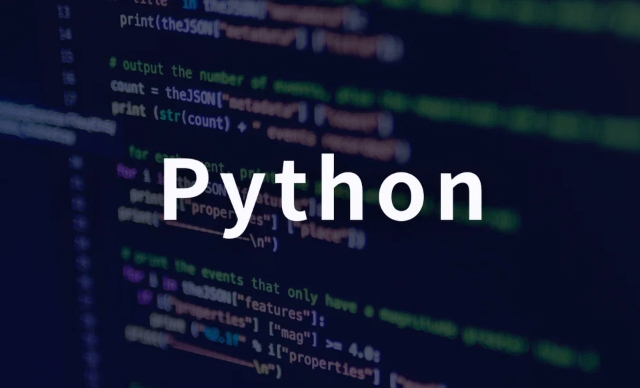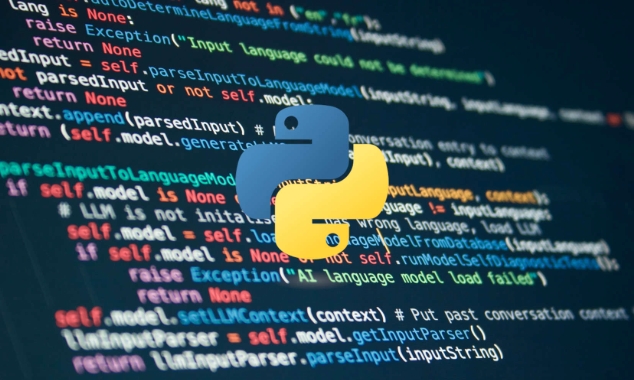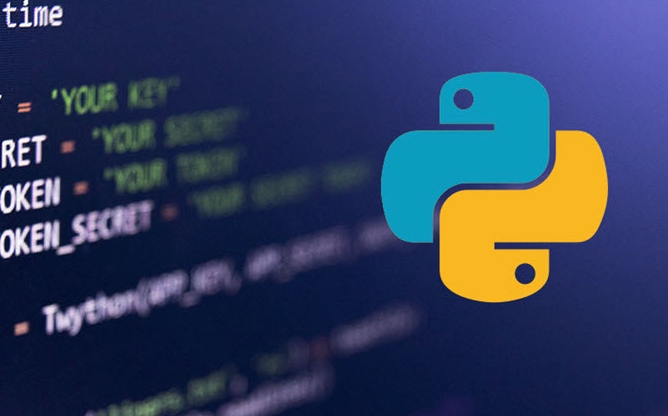Python's multiprocessing module implements parallel processing by bypassing GIL restrictions, which is suitable for CPU-intensive tasks. Its core is the Process class, which can start independent processes. For example, the show_pid function in the example is executed by two processes separately. Data sharing is mainly implemented through Queue or Pipe and Value/Array, such as passing data in queues to ensure process security. For batch tasks, Pool provides an efficient solution, supporting map() and apply_async() methods to assign tasks. However, it is necessary to pay attention to performance trade-offs: process startup overhead, big data transmission delay, shared state complexity and platform differences may affect efficiency.

Python's multiprocessing module is a solid way to handle CPU-bound tasks that can benefit from running in parallel. Unlike threading, which is limited by the GIL (Global Interpreter Lock), multiprocessing spawns separate processes, each with its own Python interpreter and memory space. That makes it ideal for tasks like heavy computings, image processing, or any job that can be split into independent chunks.

Understanding the Basics of Multiprocessing
At the core of the multiprocessing module is the Process class. It works similarly to threading's Thread , but instead of running threads within the same process, it launches new processes. Each process runs independently, so you're not blocked by Python's GIL.
Here's a basic example:

from multiprocessing import Process
import os
def show_pid():
print(f'Hello from process {os.getpid()}')
if __name__ == '__main__':
p1 = Process(target=show_pid)
p2 = Process(target=show_pid)
p1.start()
p2.start()
p1.join()
p2.join() Each call to start() launches a new process. The join() method ensures the main script waits until both processes finish. This is how you typically start using multiprocessing — by defining target functions and launching them in separate processes.
Sharing Data Between Processes
Because each process has its own memory space, sharing data between them isn't as straightforward as with threads. If you try to use global variables or regular Python objects, changes won't be reflected across processes.

There are two main ways to share data:
- Using
QueueorPipe– These are thread-safe and process-safe communication channels. - Using shared memory constructs like
ValueorArray– These allow multiple processes to read/write the same memory block.
For example, using a queue:
from multiprocessing import Process, Queue
def worker(q):
q.put("Data from process")
if __name__ == '__main__':
q = Queue()
p = Process(target=worker, args=(q,))
p.start()
print(q.get()) # Will print "Data from process"
p.join()Queues are often the preferred choice when you need to pass complex or dynamic data between processes.
Using Pools for Parallel Processing
If you have a large number of similar tasks to run, using a Pool is more efficient than manually managing processes. A pool creates a fixed number of worker processes and distributions tasks among them.
The most commonly used methods are:
-
map()– Blocks until all items are processed -
apply_async()– Non-blocking, allow you to retrieve results later via a callback
Example using map() :
from multiprocessing import Pool
def square(x):
return x * x
if __name__ == '__main__':
with Pool(4) as pool:
result = pool.map(square, [1, 2, 3, 4, 5])
print(result) # Outputs [1, 4, 9, 16, 25]Pools are especially useful when dealing with batch operations like file processing, scraping, or mathematical transformations.
Performance Considerations and Gotchas
While multiprocessing can speed things up, it's not always faster. Spawning new processes come with overhead — especially on Windows, where the entire interpreter needs to be re-spawned. So if your tasks are very small or fast, the time spent starting processes may outweight the benefits.
Also, be careful with:
- Large data transfers between processes — sending big chunks over queues can slow things down.
- Shared state — even though possible, it adds complexity and potential bugs.
- Platform differences — code that works fine on Linux might behave differently on macOS or Windows due to how processes are forked or spawned.
So think carefully about task size, data flow, and platform before diving deep into multiprocessing.
Basically that's it.
The above is the detailed content of Exploring Concurrency with Python Multiprocessing. For more information, please follow other related articles on the PHP Chinese website!

Hot AI Tools

Undress AI Tool
Undress images for free

Undresser.AI Undress
AI-powered app for creating realistic nude photos

AI Clothes Remover
Online AI tool for removing clothes from photos.

Clothoff.io
AI clothes remover

Video Face Swap
Swap faces in any video effortlessly with our completely free AI face swap tool!

Hot Article

Hot Tools

Notepad++7.3.1
Easy-to-use and free code editor

SublimeText3 Chinese version
Chinese version, very easy to use

Zend Studio 13.0.1
Powerful PHP integrated development environment

Dreamweaver CS6
Visual web development tools

SublimeText3 Mac version
God-level code editing software (SublimeText3)
 Polymorphism in python classes
Jul 05, 2025 am 02:58 AM
Polymorphism in python classes
Jul 05, 2025 am 02:58 AM
Polymorphism is a core concept in Python object-oriented programming, referring to "one interface, multiple implementations", allowing for unified processing of different types of objects. 1. Polymorphism is implemented through method rewriting. Subclasses can redefine parent class methods. For example, the spoke() method of Animal class has different implementations in Dog and Cat subclasses. 2. The practical uses of polymorphism include simplifying the code structure and enhancing scalability, such as calling the draw() method uniformly in the graphical drawing program, or handling the common behavior of different characters in game development. 3. Python implementation polymorphism needs to satisfy: the parent class defines a method, and the child class overrides the method, but does not require inheritance of the same parent class. As long as the object implements the same method, this is called the "duck type". 4. Things to note include the maintenance
 Python Function Arguments and Parameters
Jul 04, 2025 am 03:26 AM
Python Function Arguments and Parameters
Jul 04, 2025 am 03:26 AM
Parameters are placeholders when defining a function, while arguments are specific values ??passed in when calling. 1. Position parameters need to be passed in order, and incorrect order will lead to errors in the result; 2. Keyword parameters are specified by parameter names, which can change the order and improve readability; 3. Default parameter values ??are assigned when defined to avoid duplicate code, but variable objects should be avoided as default values; 4. args and *kwargs can handle uncertain number of parameters and are suitable for general interfaces or decorators, but should be used with caution to maintain readability.
 Explain Python generators and iterators.
Jul 05, 2025 am 02:55 AM
Explain Python generators and iterators.
Jul 05, 2025 am 02:55 AM
Iterators are objects that implement __iter__() and __next__() methods. The generator is a simplified version of iterators, which automatically implement these methods through the yield keyword. 1. The iterator returns an element every time he calls next() and throws a StopIteration exception when there are no more elements. 2. The generator uses function definition to generate data on demand, saving memory and supporting infinite sequences. 3. Use iterators when processing existing sets, use a generator when dynamically generating big data or lazy evaluation, such as loading line by line when reading large files. Note: Iterable objects such as lists are not iterators. They need to be recreated after the iterator reaches its end, and the generator can only traverse it once.
 Python `@classmethod` decorator explained
Jul 04, 2025 am 03:26 AM
Python `@classmethod` decorator explained
Jul 04, 2025 am 03:26 AM
A class method is a method defined in Python through the @classmethod decorator. Its first parameter is the class itself (cls), which is used to access or modify the class state. It can be called through a class or instance, which affects the entire class rather than a specific instance; for example, in the Person class, the show_count() method counts the number of objects created; when defining a class method, you need to use the @classmethod decorator and name the first parameter cls, such as the change_var(new_value) method to modify class variables; the class method is different from the instance method (self parameter) and static method (no automatic parameters), and is suitable for factory methods, alternative constructors, and management of class variables. Common uses include:
 How to handle API authentication in Python
Jul 13, 2025 am 02:22 AM
How to handle API authentication in Python
Jul 13, 2025 am 02:22 AM
The key to dealing with API authentication is to understand and use the authentication method correctly. 1. APIKey is the simplest authentication method, usually placed in the request header or URL parameters; 2. BasicAuth uses username and password for Base64 encoding transmission, which is suitable for internal systems; 3. OAuth2 needs to obtain the token first through client_id and client_secret, and then bring the BearerToken in the request header; 4. In order to deal with the token expiration, the token management class can be encapsulated and automatically refreshed the token; in short, selecting the appropriate method according to the document and safely storing the key information is the key.
 What are Python magic methods or dunder methods?
Jul 04, 2025 am 03:20 AM
What are Python magic methods or dunder methods?
Jul 04, 2025 am 03:20 AM
Python's magicmethods (or dunder methods) are special methods used to define the behavior of objects, which start and end with a double underscore. 1. They enable objects to respond to built-in operations, such as addition, comparison, string representation, etc.; 2. Common use cases include object initialization and representation (__init__, __repr__, __str__), arithmetic operations (__add__, __sub__, __mul__) and comparison operations (__eq__, ___lt__); 3. When using it, make sure that their behavior meets expectations. For example, __repr__ should return expressions of refactorable objects, and arithmetic methods should return new instances; 4. Overuse or confusing things should be avoided.
 How does Python memory management work?
Jul 04, 2025 am 03:26 AM
How does Python memory management work?
Jul 04, 2025 am 03:26 AM
Pythonmanagesmemoryautomaticallyusingreferencecountingandagarbagecollector.Referencecountingtrackshowmanyvariablesrefertoanobject,andwhenthecountreacheszero,thememoryisfreed.However,itcannothandlecircularreferences,wheretwoobjectsrefertoeachotherbuta
 Python `@property` decorator
Jul 04, 2025 am 03:28 AM
Python `@property` decorator
Jul 04, 2025 am 03:28 AM
@property is a decorator in Python used to masquerade methods as properties, allowing logical judgments or dynamic calculation of values ??when accessing properties. 1. It defines the getter method through the @property decorator, so that the outside calls the method like accessing attributes; 2. It can control the assignment behavior with .setter, such as the validity of the check value, if the .setter is not defined, it is read-only attribute; 3. It is suitable for scenes such as property assignment verification, dynamic generation of attribute values, and hiding internal implementation details; 4. When using it, please note that the attribute name is different from the private variable name to avoid dead loops, and is suitable for lightweight operations; 5. In the example, the Circle class restricts radius non-negative, and the Person class dynamically generates full_name attribute






